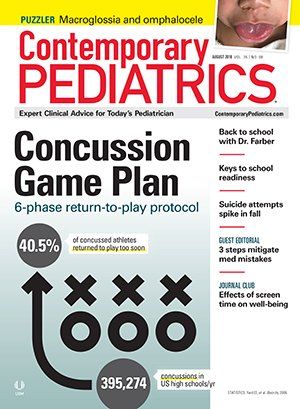Children’s well-being decreases as media use increases
Compared with their peers who spend no more than 2 hours each weekday exposed to digital media, school-aged children who are in front of screens for longer are less likely to be doing well overall, according to their parents. Furthermore, how much digital media exposure (DME) a child gets is inversely related, in a dose-dependent manner, to markers of childhood “flourishing.”
Michael G Burke, MD

Compared with their peers who spend no more than 2 hours each weekday exposed to digital media, school-aged children who are in front of screens for longer are less likely to be doing well overall, according to their parents. Furthermore, how much digital media exposure (DME) a child gets is inversely related, in a dose-dependent manner, to markers of childhood “flourishing.”
These were the major findings of an analysis of data from the 2011-2012 National Survey of Children’s Health for almost 64,500 children aged from 6 to 17 years.
The survey assessed DME with 2 parental questions related to how much time on an average weekday the child spends, independently of schoolwork, 1) watching videos, TV, and DVDs, and playing video games; and 2) using computers, cell phones, and other electronic devices.
To assess their children’s well-being, parents addressed 5 markers of flourishing: 1) how often the child does required homework; 2) cares about doing well in school; 3) finishes tasks; 4) follows through on commitments; and 5) stays calm and in control when faced with a challenge.
Fewer than one-third (30%) of children had a combined daily DME of fewer than 2 hours; 35.7% had 2 to 4 hours; 17.3% had 4 to 6 hours; and 16.5% had 6 or more hours. Children with the lowest average daily DME were more likely to demonstrate all 5 flourishing markers (the child “usually/always” practices the behavior in question) than their counterparts with higher daily DME averages. Additionally, as the number of DME hours increased, the proportion of children who demonstrated each individual marker decreased incrementally, even after accounting for a variety of sociodemographic factors.
Of note, among children with fewer than 2 hours of DME, only 38% had access to media devices in their bedroom compared with 73% of those with 6 or more hours of DME. In addition, one-third of those with 6 or more hours of daily DME were not subject to any parental limits on their screen time (Ruest S, et al. J Pediatr. 2018;197:268.e2-274.e2).
Thoughts from Dr. Burke
We are in the midst of a huge experiment on the impact of screen time on the developing child and adolescent brain. Whereas the well-being of children in this study was measured by parent report and although it is hard to prove that screen time caused the failure to flourish rather than the failure to flourish caused the use of screen time, this and other recently published studies warrant our attention and concern. Do you know how much time your patients spend using their phones, tablets, game consoles, and computers? In a recent Pediatrics Perspectives, Danielle Clark and colleagues at Baylor College of Medicine, Houston, Texas, propose a modification of the HEADSSS assessment to include screening for excessive use of social media (Pediatrics. 2018:141[6]:e20173655). The first step toward effective intervention is to make your patients and their parents aware of the magnitude of this problem.
